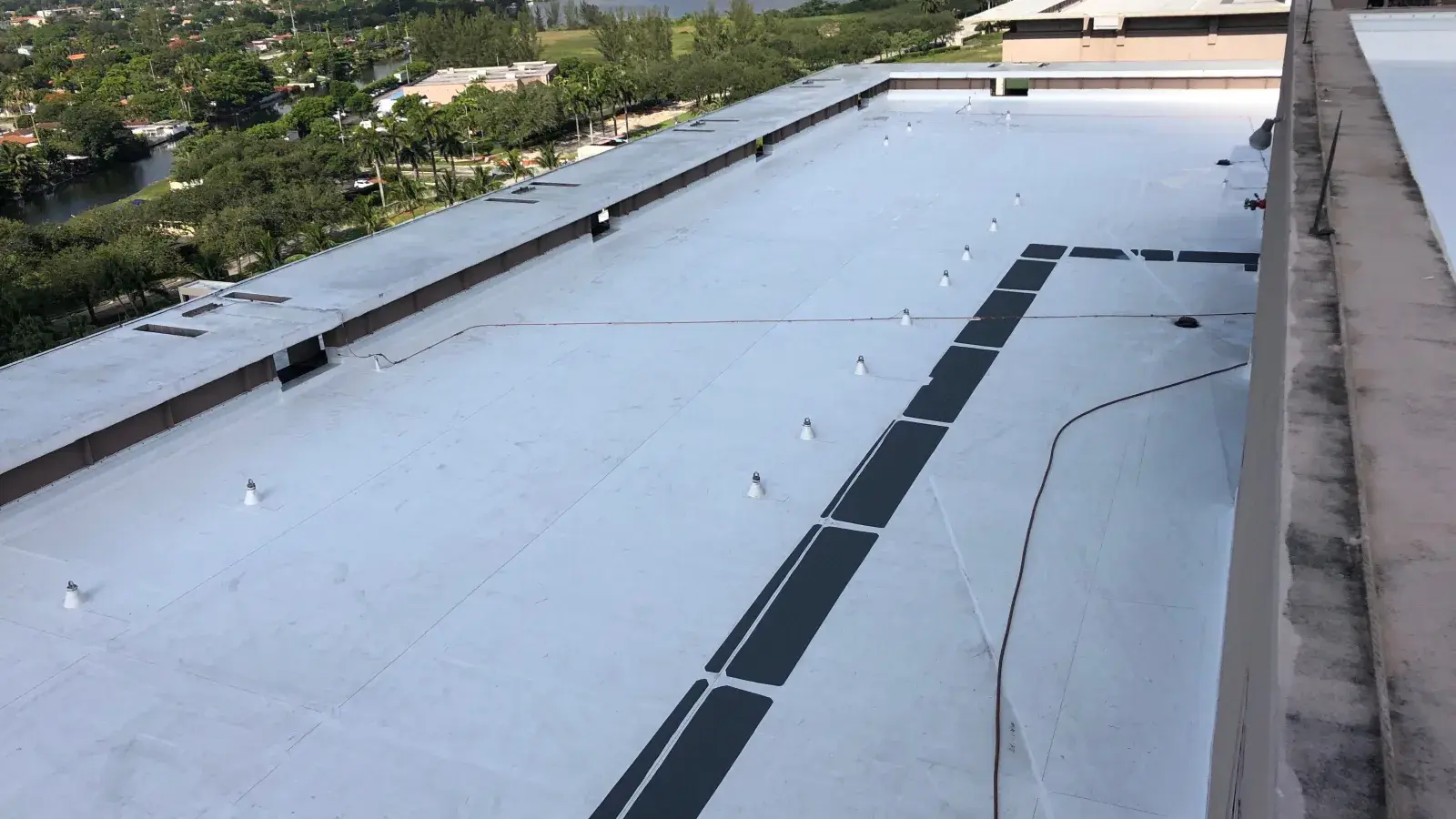Flat Roof Re-Cover vs. Replacement: A Cost-Effective Option

Since 1978, Best Roofing has solidified its reputation as the go-to roofing partner for community associations, property managers, and commercial property owners in Miami, Fort Lauderdale, and West Palm Beach. Boasting over 45 years of industry experience, we've been a witness to the ever-changing dynamics of roofing trends. A common question that often arises is, "Are there any alternatives to traditional roof replacement?"
Today, we're exploring the benefits of flat roof re-cover and how it compares to the traditional replacement method.
Understanding Flat Roof Re-Cover
A roof replacement entails the removal of all existing roofing materials down to the deck. This includes components such as the vapor barrier, insulation, membrane, and flashings. Typically, when the roof membrane (the surface layer) starts showing signs of wear and tear, it's an indicator that a replacement might be on the horizon.
Yet, there are circumstances where a total overhaul isn't necessary. Instead, we can place a new roof atop the existing one. This method, known as roof recover, falls under the category of roof restoration. Due to its non-intrusive nature and cost-effectiveness, many are gravitating towards a roof re-cover as a viable alternative to a full-blown replacement.
Is Your Roof a Suitable Candidate for Re-Cover?
While re-cover can be an attractive option, it's not universally applicable. A detailed inspection is essential to gauge if re-covering is the right course of action for your commercial flat roof.
The inspection should encompass:
- A thorough examination of your roof membrane, flashings, and other surface conditions. This will provide insights into your current roof's age.
- A core sample evaluation. This procedure is akin to a medical blood test; it provides a glimpse beneath the surface membrane, offering valuable insights. For instance, the Florida Building Code stipulates a roof can only be re-covered once. If two roofing layers are present, re-covering is off the table.
- Checking the integrity of the roof deck. Before considering a re-cover, it's paramount to ensure the roof deck is devoid of significant deterioration.
- Conducting a pull test to guarantee that the chosen attachment method for the re-cover meets code prerequisites.
- A moisture survey. This is pivotal as it identifies any moisture trapped within the existing roof. Capturing moisture during a re-cover can be detrimental. If over 25% of the roof is damp, replacement becomes a more suitable route.



What are the Benefits of a Flat Roof Re-Cover?
- Lower Cost: Without the need to remove the entire existing setup, both labor and material costs see a significant reduction.
- Shorter Project Duration: No complete removal equates to a streamlined timeline.
- Minimal Disruption: Avoiding a full tear-off results in a tidier process with less waste and environmental impact.
- Business Continuity: Especially relevant for commercial setups, the swift completion ensures minimal operational disruptions.
- Reduced Water Intrusion Risks: An intact existing layer adds another layer of defense against water seepage.
- New Roof Status: A meticulously executed re-cover meets building regulations and is classified as a new roof.
- Comprehensive Warranty: A roof re-cover typically comes with a warranty equivalent to that of a total replacement.
When is a Roof Re-Cover Less Ideal?
A re-cover, although advantageous, is not a universal solution. Its success is tightly bound to the existing roof's condition. If moisture is entrapped within the insulation or if the deck below has deteriorated, re-covering may not be apt. The newly laid membrane's efficacy is directly proportional to the condition of the foundation it rests on.
Hence, before making a decision, conducting non-destructive tests such as infrared thermography is vital. Any moisture-laden areas must be addressed ahead of the re-cover.
Additionally, introducing new insulation and membrane might necessitate adjustments to existing infrastructure, like curbs and drains, to cater to the increased thickness. On rare occasions, unnoticed challenges like deck corrosion might emerge if the roof is only recovered.



In Conclusion
While roof re-covers present an appealing and cost-effective counterpart to total replacements, the decision should be a reflection of the existing roof's state. An in-depth evaluation teamed with a reliable roofing partner is key.
At Best Roofing, we take immense pride in guiding Miami, Fort Lauderdale, and West Palm Beach property owners through their roofing journeys. Be it a flat roof re-cover or a complete replacement; our team ensures your roof stands resilient against the ever-changing South Florida climate.



